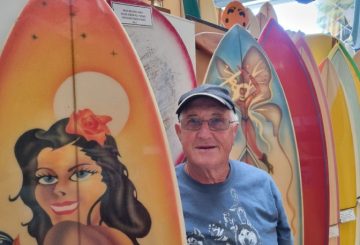今週の土曜日、タウランガ・シティ・トライデンツでは、国内最大級の1日フラッグアメリカンフットボール大会が開催されます。北島北部の他の8つのクラブのチームがグリートン・パークに集まり、男子、女子、ユース(14~18歳)の各部門が参加するエキサイティングなトーナメントに参加します。
トライデンツは男子オープン部門に2チーム、女子部門とユース部門にそれぞれ1チームずつ、合計4チームで参加します。2028年ロサンゼルス大会のオリンピックスポーツとして最近承認されたフラッグフットボールは、アメリカンフットボールの非接触型スポーツです。50ヤードのフィールドで両サイドに5人のプレーヤーがプレーするペースの速いゲームです。このスポーツはニュージーランドだけでなく世界中で人気が高まっています。
約20年ぶりにベイ・オブ・プレンティでアメリカンフットボールクラブとなったトライデンツは、2022年9月に初めてタウランガ・インビテーショナル・フラッグ・フットボール・トーナメントを開催しました。このイベントには、7 つの異なるクラブから 9 チームが参加しました。地元での人気が高まっているため、クラブには現在、女子チームとユースチームが加わりました。参加チーム数の増加に対応するため、大会はホームグラウンドのワイプナ・パークからグリートン・パークに移されました。
トライデンツのアレックス・ハトウェル会長は、このトーナメントの規模はタウランガでの人気が高まっていることを反映していると言う。女性や青少年を対象とした競技会を開催するクラブの能力は、このスポーツをすべての人に開放しています。また、マスターズチームは男子オープン部門で若い選手たちと対戦することになるとも話した。
1990年代からニュージーランドのアメリカンフットボールに携わってきたクラブヘッドコーチのケビン・パララギは、タウランガの観客にクラブのスキルレベルを披露できることを楽しみにしている。彼は、この大会は、特にNZAFFのフラッグ・フットボール代表が数週間後に迫っていることを考えると、他のクラブに対する彼らの立ち位置を測るベンチマークとなるだろうと話した。
トーナメントは3月9日土曜日の午前10時に始まり、午後5時30分頃に終了する予定です。


















































(1)-360x245.jpg)










